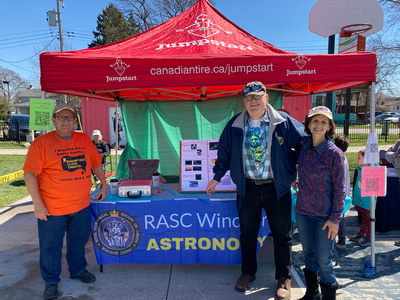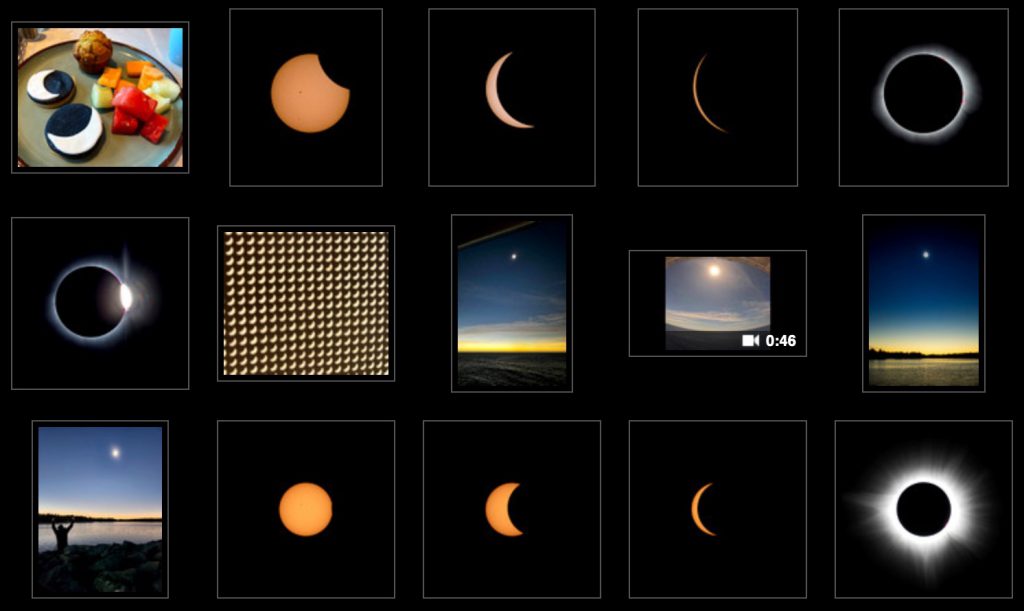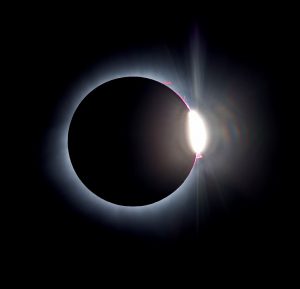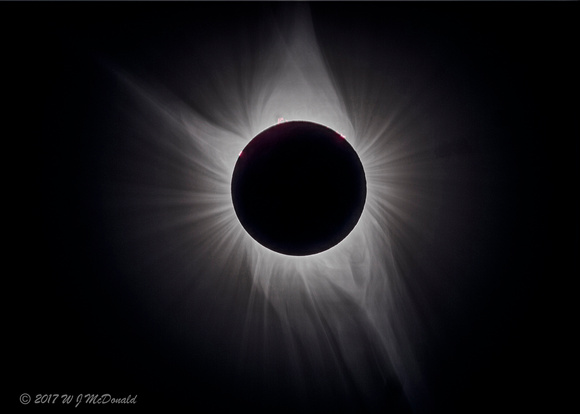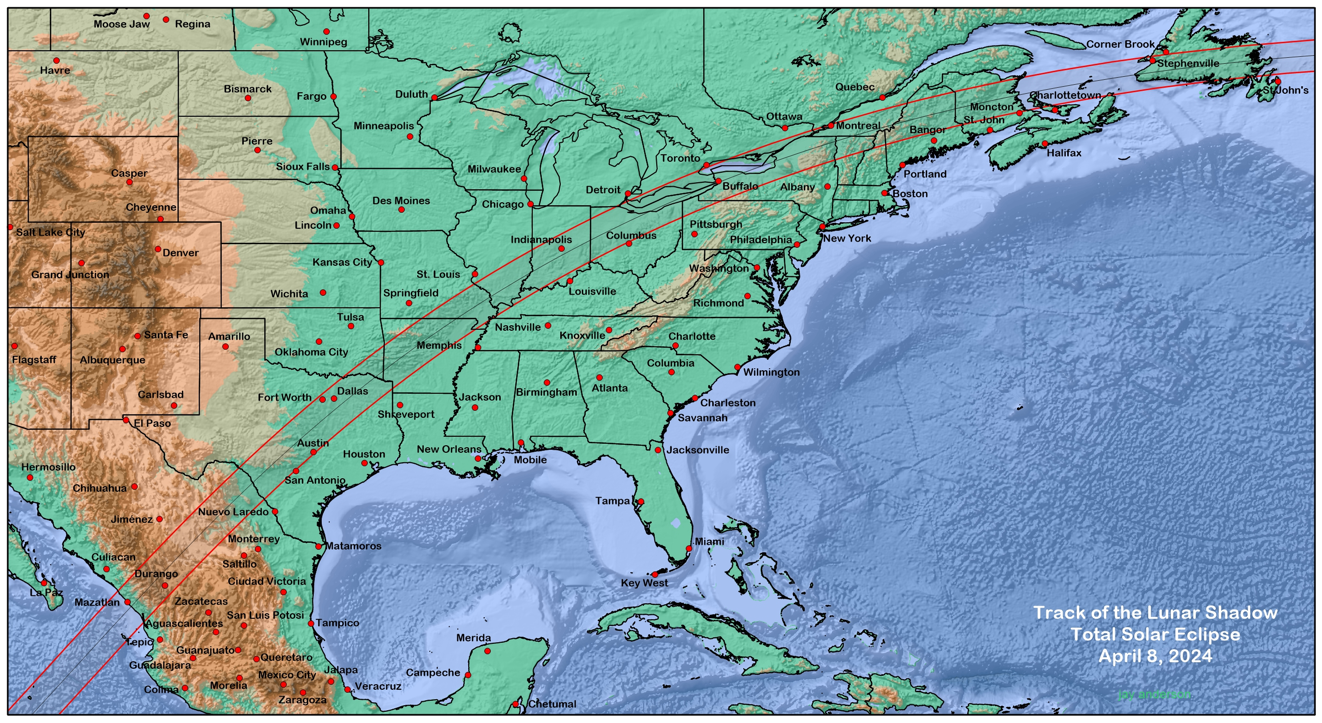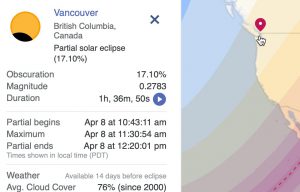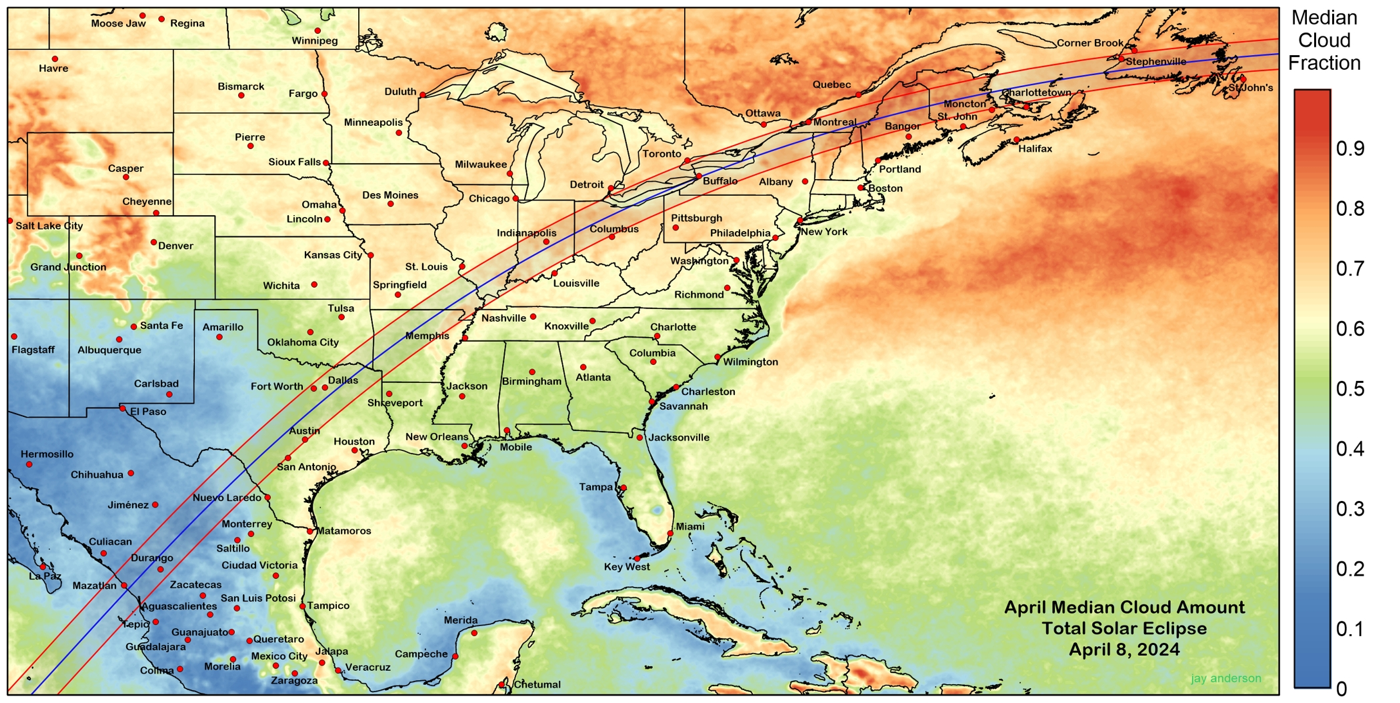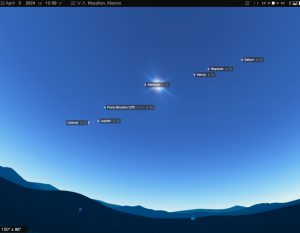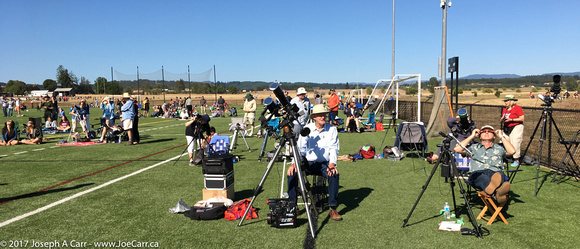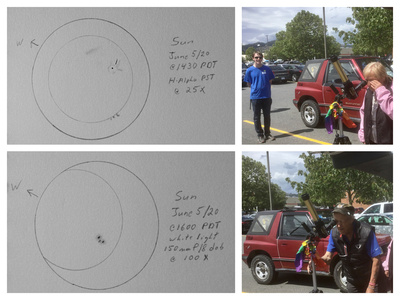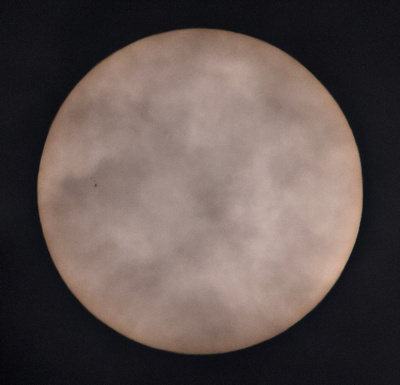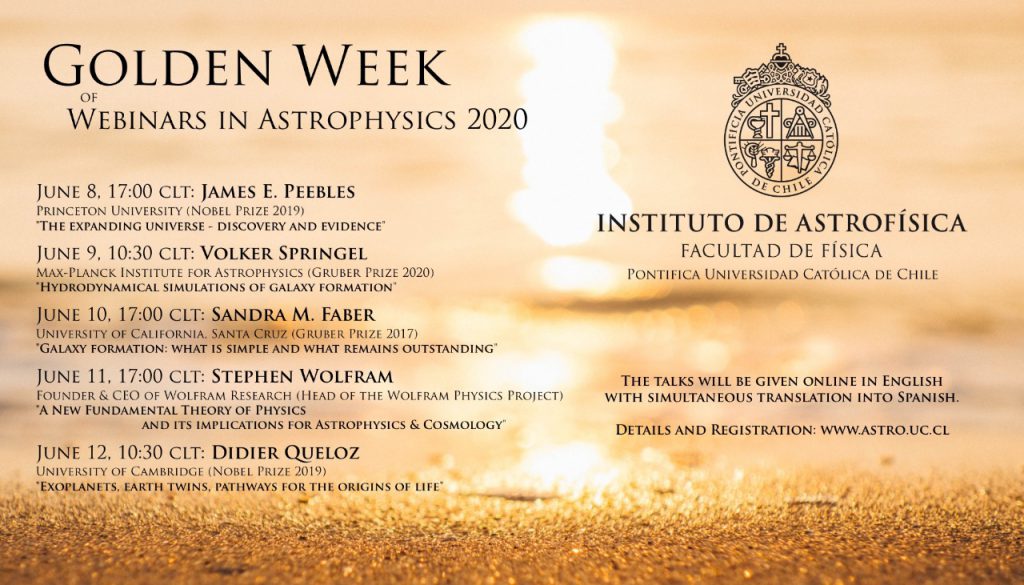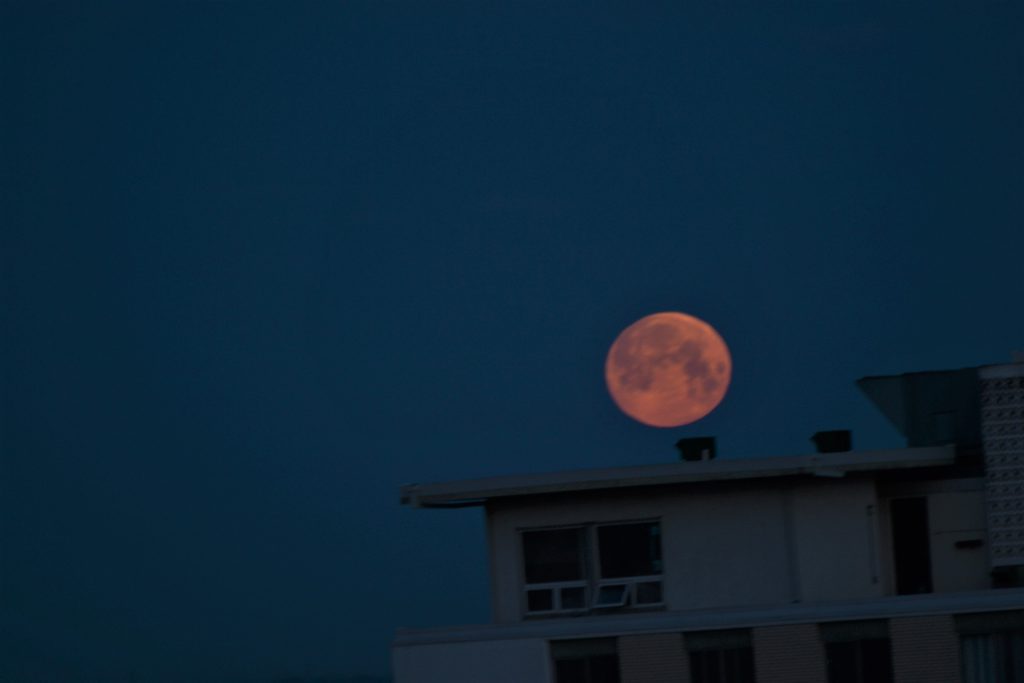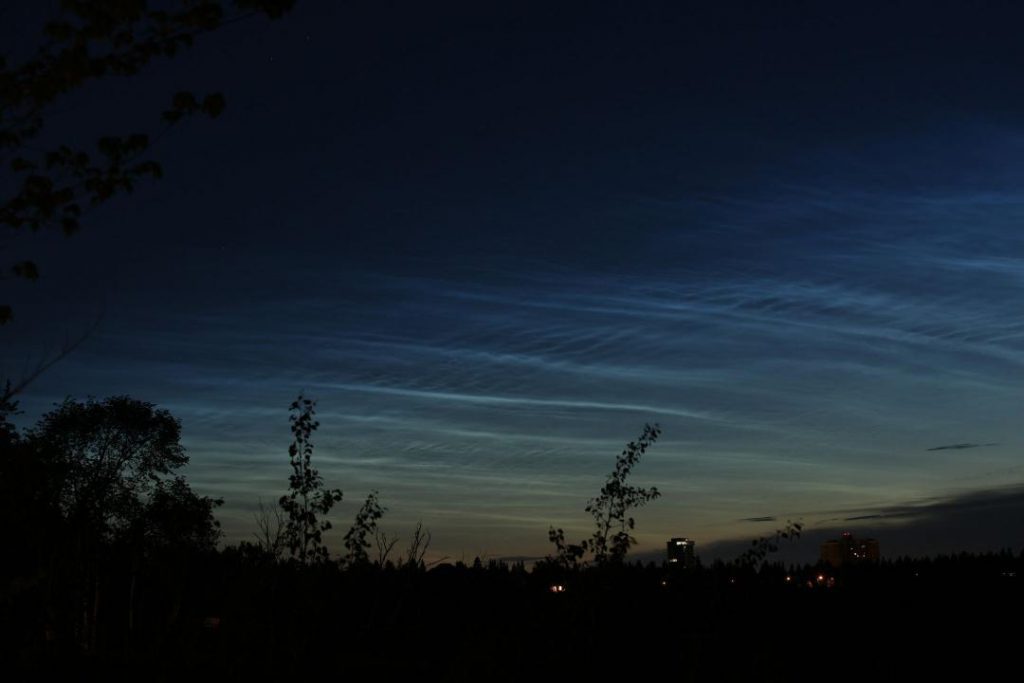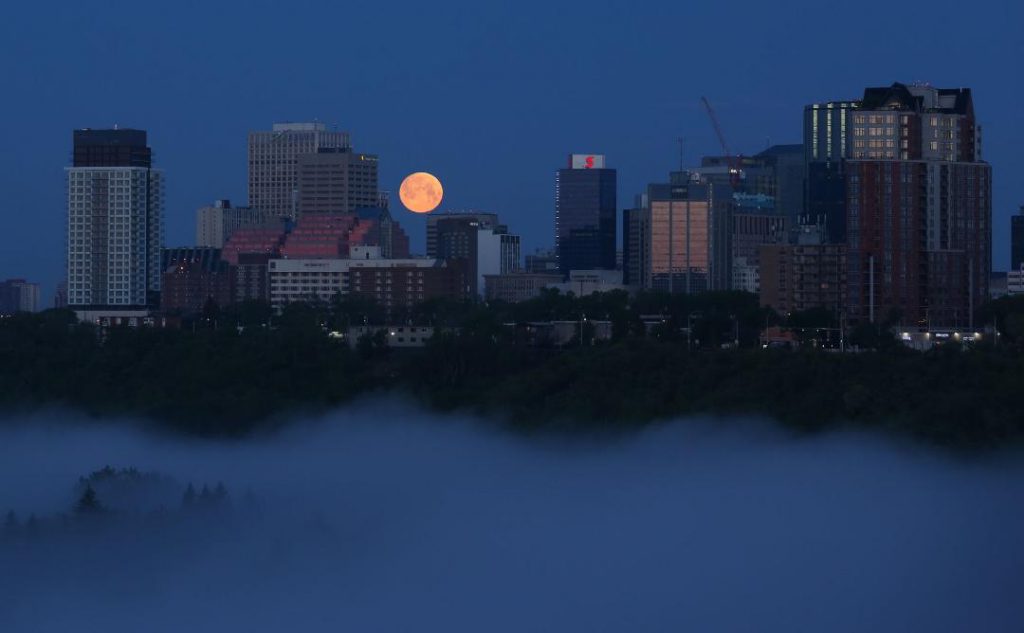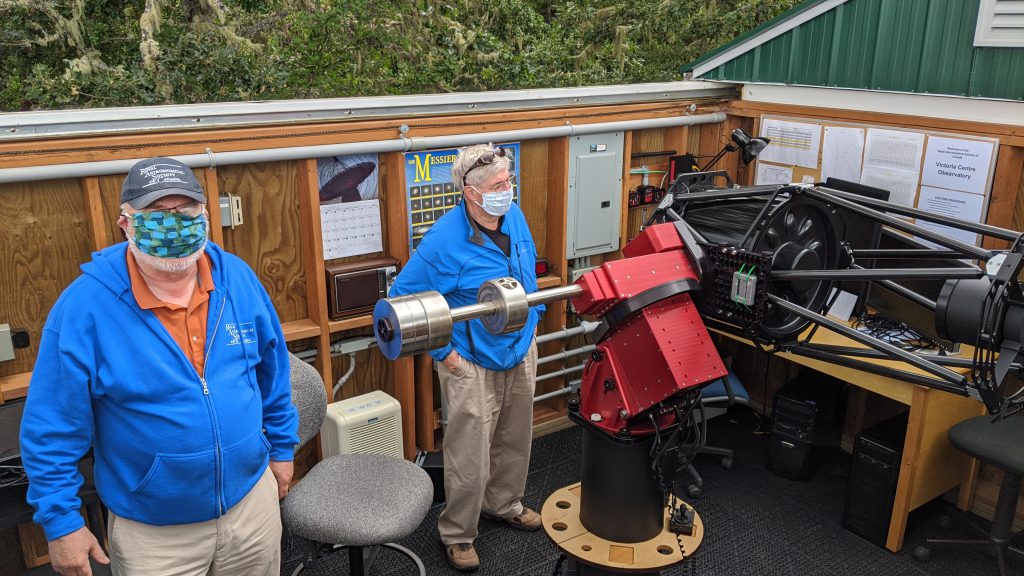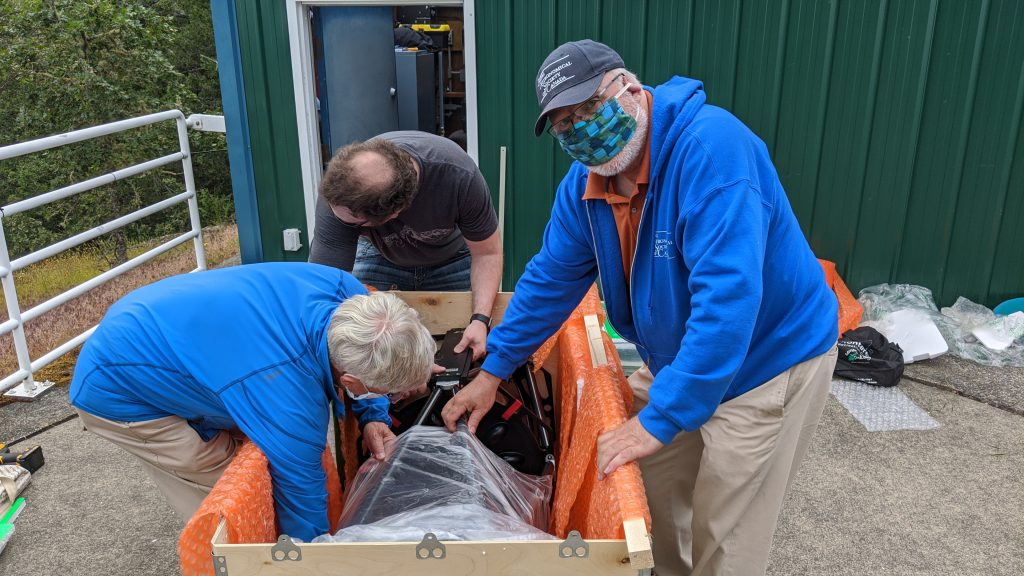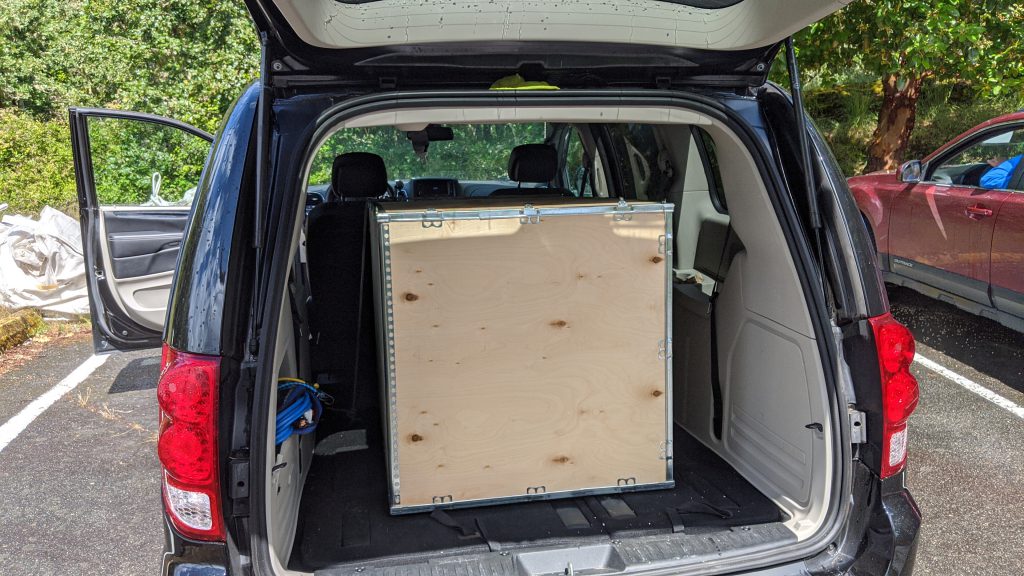What else can I write about or even talk about other than that celestial event that took place on April 8?
I had seen the 1979 eclipse in Manitoba and the 2017 eclipse in Oregon. After 2017, all us eclipse addicts faced a difficult decision: where should we go to see the 2024 total solar eclipse? The decision wasn’t simple because of the path of this eclipse and the fact that April weather is more problematical than the August weather conditions in 2017.
In part because of the pandemic, I didn’t make arrangements for the eclipse years in advance as I had done for 2017. As 2024 dawned, I concluded it was too late to arrange a trip to Mexico or Texas for a reasonable price. I know many people in Toronto, but I felt that too many people chasing the eclipse in Hamilton and environs might complicate things. So I decided to go to Windsor, Ontario, just outside the path of totality. We have relatives there, and it would be relatively easy to cross the border there to chase the eclipse in Ohio if necessary. But it was still a big gamble, and I made sure I had other things to do to justify the trip.
As April 8 got closer, weather predictions called for clouds in southern Ontario, and when I arrived in Toronto on April 4, I was greeted with cold, cloudy and rainy weather. Two days before the eclipse as Audrey and I made our way to Windsor, the skies cleared. Things were looking more promising, but clouds were still predicted for the eclipse.
The night before, the prediction was still more promising for Ohio than the Windsor area, and Ohio locations were closer to the centreline of the eclipse, which promised a longer period of totality. I prepared to cross the border.
April 8 dawned in Windsor with blue skies. The forecast still called for clouds in the mid afternoon, when the eclipse was due to take place. The forecasts for Ohio called for longer periods of cloudiness in the afternoon, which I feared meant thicker clouds, and so I decided to stay in Canada.
Audrey and I, along with her sister and her husband, drove south from Windsor through Amherstberg into the path of totality. Many eclipse chasers in the area were already arriving in Point Pelee Park, which was closer to the centreline but involved very limited access, so I thought we might set up in Leamington. Before we got there, we found a great spot to watch the eclipse at Colchester Harbour and Beach. The RASC Windsor Centre had set up tents and telescopes there, a restaurant, coffee shop and other facilities were nearby, and scores of people were already settling in to watch the eclipse over Lake Erie.
Looking south across Lake Erie, we saw a bank of clouds that everyone hoped would stay where it was. But true to the prediction, the clouds moved our way and covered the sun as the partial phase of the eclipse began a little before 1 p.m. Fortunately, the clouds weren’t very thick.
Finally, at about 3:12 p.m., totality began. We were amongst the first to see totality that day from Canadian soil. The transition from needing eclipse glasses to full totality with the naked eye seemed to be prolonged to me, but finally we got our 90 seconds of totality and dark skies. Venus was plainly visible through the thin layer of cloud, but I don’t recall seeing Jupiter or any other celestial object. The incandescent but not overpowering glow of the Sun’s corona took centre stage.
In the moments before and after totality, the lighting of the area took on a strange hue. During totality, my viewpoint overlooking Lake Erie allowed me to see the approaching “sunset” to the west and the receding “sunrise” to the east. During this time, I took a couple of photos of the sun and of the light effects around the horizon with my iPhone, and I set up my iPad to film totality. I wanted to spend most of totality enjoying the view rather than messing with cameras.
All too soon, totality was over, and soon people started to leave. We remained for most of the rest of the eclipse to savour the incredible spectacle. By the time we got back to Windsor, all the clouds had disappeared. So had the crowds, and as a result we encountered no traffic jams.
The hours and days that followed became a gigantic debrief on this event. Who got a good view of the eclipse? Who got skunked by the weather? The evening of April 8 I joined many of you in an online Astronomy Café.
It turned out that Joe Carr, John McDonald and Bill Weir got a great look at the eclipse from their cruise ship, The Discovery Princess, and the poor weather in Texas inspired Leslie Welsh to stop in Arkansas to catch the eclipse. Thicker clouds in the Niagara region obscured the eclipse for Jill Sinkwich and Lauri Roche. Marje Welchframe saw parts of the eclipse through clouds in Kingston. The weather was much better in the Montreal area, to the delight of Randy Enkin, Chris Purse, and Brian and Nathan Hellner-Mestelman. Alex Schmid had clear skies in Sherbrooke. The clouds parted for Clayton Uyeda in New Brunswick.
Victoria Centre members’ photos of the 2024 Total Solar Eclipse.
Back in Victoria, David Lee, Kirsten Pedersen and others entertained a good crowd at a rainy Centre of the Universe during the partial solar eclipse here.
Before I came home, I heard about RASC Executive Director Jenna Hinds’ successful eclipse trip to Illinois. A few days later I attended a meeting of the RASC Mississauga Centre in person, and I heard about more experiences along the path of totality, including the troubled weather in Texas, which also affected our good friend Peter Jedicke from the London Centre.
So the viewing conditions for the 2024 total solar eclipse turned out to be less than perfect but better than most of us could have hoped for.
Now the question arises – when is the next one? August 12, 2026, in Greenland, Iceland and Spain. In North America, the wait will go on until August 23, 2044. How long will our waits go on? Those decisions are for another time.
